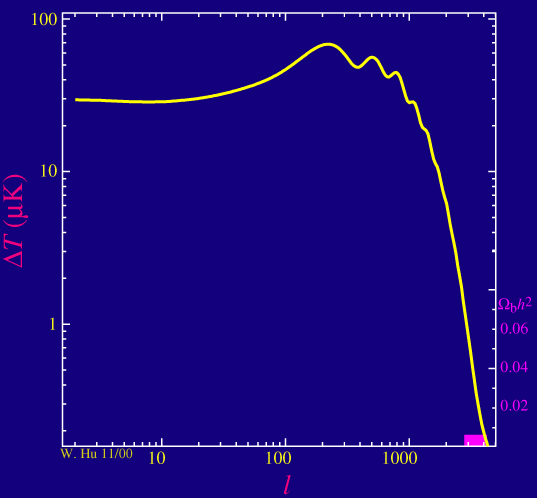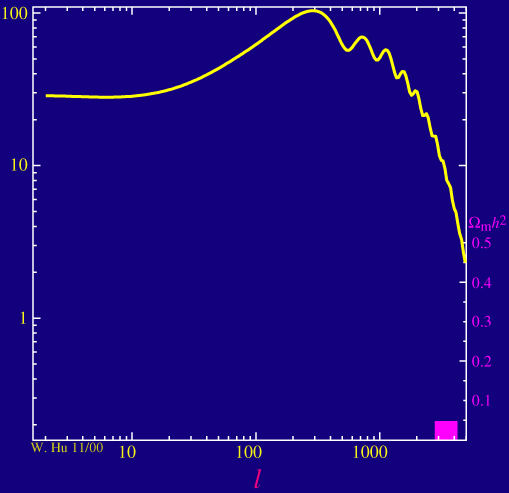
Increasing the baryon density, makes the photon-baryon fluid more tightly coupled at recombination and hence shifts the damping tail to smaller angular scales or higher multipole moments l:

Increasing the matter density increases the relative age of the universe at recombination and hence increases the angular scale of the damping (lower multipoles):

Finally, we have seen that the angular scale of the damping tail moves with the curvature of the universe, just like the position of the peaks. In the standard cosmological model, that the damping tail is sensitive to all three parameters means that there is a set of consistency tests with which to check the measurements of the curvature, baryon density and matter density from the lower peaks.
Consistency checks are great in that they will check the assumptions underlying our standard model. In particular, the damping tail will be able to check our assumptions that the universe did indeed recombine as we think it did and that the inference on the curvature of the universe is immune to any abiguity in how the acoustic oscillations formed, i.e. the assumption of inflationary initial conditions. Failure of the consistency tests would be even more exciting than verification!